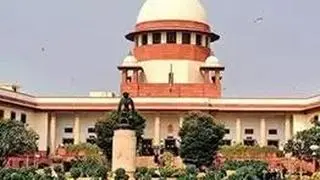The BJP’s victory in Gujarat came with a sour taste. Even as the party managed to keep its urban strongholds intact by improving its seats tally, with some gains in central and north Gujarat, a dip in Saurashtra proved a big dent in its fortress.
The Patidar agitation, along with the farm distress and anti-incumbency factors, caused a severe blow to the ruling party in the Saurashtra-Kutch region, where the BJP scored a measly 23 seats out of 54, is its lowest in at least the past three elections.
Saurashtra is the largest grower of cotton and groundnut. The non-remunerative produce and the inadequate procurement process, irked the farmers. They wiped out the BJP from three districts (Morbi, Amreli and Gir-Somath) out of 11.
Prime Minister Narendra Modi had addressed 11 public rallies across the Saurashtra and Kutch regions, but his efforts turned futile.
Contesting on a Congress ticket, Patidar Anamat Andolan Samiti (PAAS) supporter Lalit Vasoya won from Dhoraji in Rajkot district with a margin of over 25,000 votes. The Congress saw its seats in the region doubling from 15 in 2012 to 31 this time. The extensive campaigning done by the party’s top leader Rahul Gandhi also helped.
Southern surpriseIn a pleasant surprise for the BJP, the south Gujarat region gave the party a respectable tally of 25 seats out of 35. The seven districts mostly comprise tribal, minority and businessmen voters.
Surat, which witnessed violence and angry protests by the Patidar community during the reservation agitation, and later by the business and trading community over GST, gave the BJP 15 out of 16 seats.
The Congress could hardly make a dent in the region, where the PM addressed six rallies. It, however, gained one seat in Tapi district to take its tally to eight in the region. Former JD(U) MLA and tribal leader Chhotu Vasava and his son Mahendra Vasava won on their newly formed Bhartiya Tribal Party.
Northern upsetsBefore it was hit by devastating floods in August, the north Gujarat region was already crippled by the Patidar agitation, apart from lower prices of cotton and castor. These, however, failed to hurt the BJP’s prospects, as the government moved swiftly to provide relief in the flood-hit Banaskantha, Patan and Sabarkantha districts.
However, OBC leader Alpesh Thakor and Dalit leader Jignesh Mevani posed a major challenge to the BJP. The duo made it to the Assembly with handsome margins, defeating their BJP rivals.
Of the 32 seats in the region, the BJP won 11 while the Congress won 20 and Mevani, an Independent from Vadagam, took one.
The BJP suffered some loss in Mehsana district, the epicentre of the Patidar agitation, getting just two of the seven seats.
Despite the casteist tone the campaigning took, the crucial Patidar seats including Mehsana, from where Deputy Chief Minister Nitin Patel contested, remained with the BJP.
Central fortressComprising eight districts and 61 seats, central Gujarat has two major urban centres, Ahmedabad and Vadodara. Out of the 21 seats in Ahmedabad district, the BJP retained 15, while in Vadodara, it grabbed eight seats out of 10. Its total tally in the region improved from 37 in 2012 to 39 this year. However, it lost six seats in Ahmedabad district to the Congress.
Former Gujarat Congress chief Siddharth Patel lost from Dabhoi in Vadodara district with a margin of 2,839 votes. Congress turncoat CK Raulji, who contested from Godhra on a BJP ticket, made it with a narrow margin.
Vadodara voters could connect well with Modi’s development pitch, as the region has a high penetration of canal irrigation, combined with horticulture and other cash crops. Also, industry clusters in the region, with several MNCs, have provided reasonable employment and business opportunities. The Patidar factor, according to political watchers, failed to surface there.








Comments
Comments have to be in English, and in full sentences. They cannot be abusive or personal. Please abide by our community guidelines for posting your comments.
We have migrated to a new commenting platform. If you are already a registered user of TheHindu Businessline and logged in, you may continue to engage with our articles. If you do not have an account please register and login to post comments. Users can access their older comments by logging into their accounts on Vuukle.